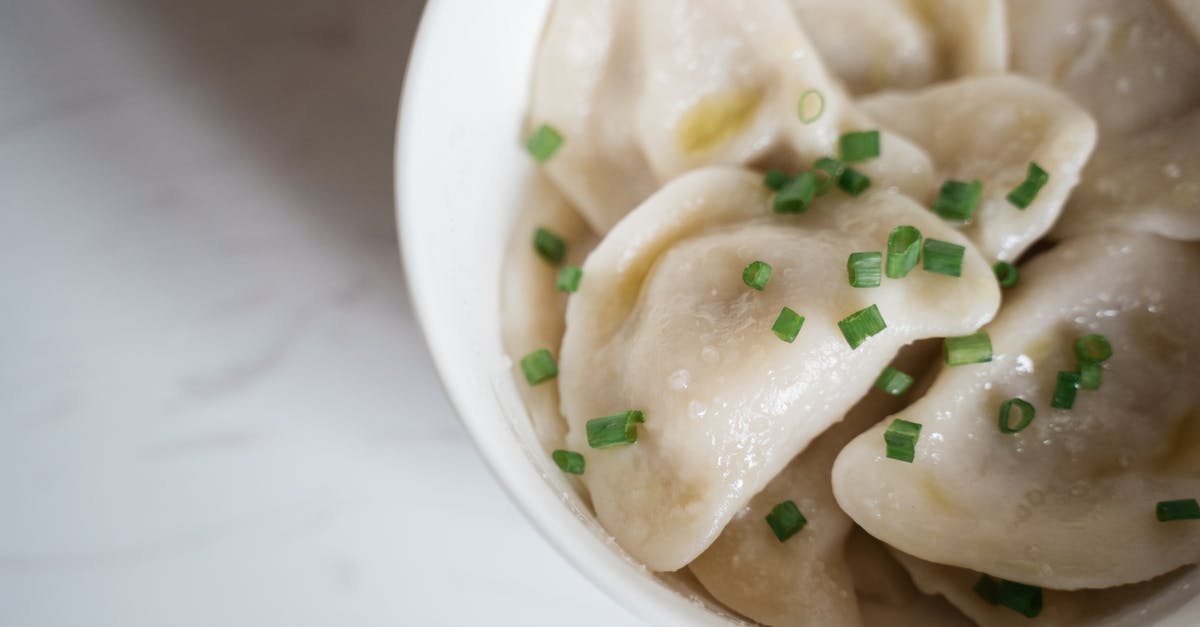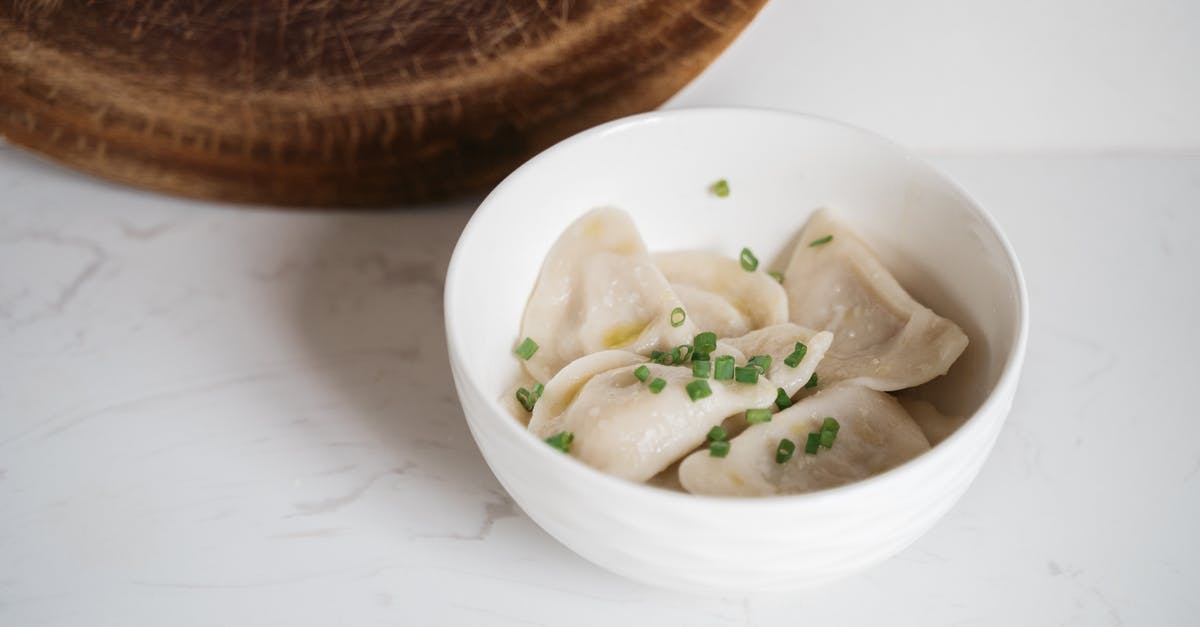Why do dumplings float when they are ready?

Most dumpling recipes—including those discussed on this site—claim that the dumplings will be ready when they float to the surface. I have two interrelated questions:
- Does this rule ever fail? For example, might there be certain recipes or conditions (e.g., altitude) where one should allow the dumplings to cook further after they have floated? Conversely, are there certain recipes/conditions where one should remove the dumplings before they float?
- If this is a relatively universal rule, what is the science behind it?
Best Answer
I will quote here the bible of cooking science, Harold McGees "On Food and Cooking":
"Dumpling doughs are minimally kneaded to maximize tenderness, and benefit from the inclusion of tiny air pockets, which provide lightness. [...] This tendency to rise with cooking is due to the expansion of the dough's air pockets, which fill with vaporized water as the dumpling interior approaches the boiling point and make the dough less dense than the surrounding water."
Following this, your dumpling must be a proper dumpling - dough that was only minimally kneaded, while altitude does not matter.
Why does this coincidence with being ready?
[...] the starch granules absorb water molecules, and swell and soften as the water molecules intrude and separate the starch molecules from each other. This granule softening [...] takes place in a temperature range that depends on the seed and the starch, but is in the region of 140-160°F/60-70°C. The tightly ordered clusters of amylose molecules require higher temperatures, more water, and more cooking time to be pulled and kept apart than do the looser clusters of amylopectin molecules.
So, altogether, the starch molecules do not absorb much more water as they are done, so the remaining water can vaporize and fill the air pockets, which makes the dumpling float then. Or, in other words, a floating dumpling is actually overcooked and so guaranteed to be ready (if the preconditions are met).
Does this rule ever fail?
Yes. Your dough needs to have sufficient air pockets for floating. Your dough needs to be made out of starch that is willing to absorb water. A dough made out of waxy potatoes has a fair chance to not float in time. This does match with German recipes for potato dumplings using waxy potatoes, that warn about the dumplings falling apart due to overcooking, if there is too much water in the pot (as it takes too much time for the dumpling to rise).
Pictures about "Why do dumplings float when they are ready?"



Quick Answer about "Why do dumplings float when they are ready?"
This tendency to rise with cooking is due to the expansion of the dough's air pockets, which fill with vaporized water as the dumpling interior approaches the boiling point and make the dough less dense than the surrounding water."Are dumplings supposed to float?
The dumplings will float to the top of the broth, even though at first they may plop under the broth. It's okay if they cook on top of the chicken pieces. If you removed the chicken, they'd still float to the top, though.How do you know when dumplings are fully cooked?
Remove a dumpling and insert the fork in the center to split the dumpling. They are finished when the center is cooked through and fluffy, not dense and doughy.What happens when you overcook dumplings?
Do not overcook your dumplings. They may disintegrate if left to cook too long.How long should dumplings be boiled for?
Bring a large pot of water to a boil. Cook dumplings in batches of about 8 until they are cooked through, 3 to 4 minutes. Using a slotted spoon, transfer the dumplings to a serving platter. Serve warm with the dipping sauce.How to Make Dumpling Dough | Wrappers for Boiled Dumplings
More answers regarding why do dumplings float when they are ready?
Answer 2
I just want to add an important instance in which dumplings that float may not yet be cooked: frozen dumplings. There are plenty of instances I’ve actually encountered in which the dumpling floats because the shell is cooked but the filling isn’t because they’d come from right out the freezer. Ostensibly if you had even a room temp dumpling but that had a really large volume to surface area ratio, it might be undercooked on the inside by the time the dough is cooked through.
Answer 3
It's not universal, it is simply a function of how much water is lost during cooking. Even when boiling, meat looses internal water as it cooks.
Not everything is ready when it floats, some things will never float, some will pop to the surface way too early to be considered done.
It is just coincidence your recipe is done when it floats, but for those recipes that reliably do something when it's done is a great visual indicator that it is likely done.
Sources: Stack Exchange - This article follows the attribution requirements of Stack Exchange and is licensed under CC BY-SA 3.0.
Images: Anna Tarazevich, Anna Tarazevich, Mo, Bess Hamiti
